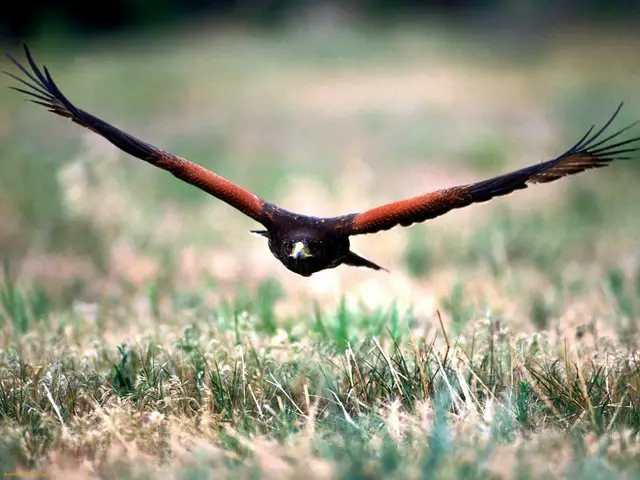This article affirms the most interesting and amazing Harris Hawk facts. The Harris Hawk (Parabuteo unicinctus) breeds all throughout southwestern United States, Argentine and Chile. These types of hawks are the medium sized birds of prey and are also known as Bay winged or Dusky Hawk. It is a lone member of genus Parabuteo. These birds of prey are highly sociable and are easy to be trained. Unlike other raptors, these birds of prey are not solitary hunters and the success rate is higher when they forage in groups rather than alone. The ideal group must not precede five individuals. Even though Harris hawks are aggressive by nature; they are by no means non-cooperative in that the naturalists have affirmed that these birds can very well be trained.
Harris Hawk Facts
- These species are 46 – 76 cm (18 – 30 inches) long.
- Harris hawk has a wingspan of about 1.1 metres (3.6 feet).
- As in other raptors, females are 35% greater as compared to males.
- The males weigh around 710 grams (25 oz), and the weight of the females is 1,020 grams (36 oz).
- Yellow legs, brown plumage are the two basic physical characteristics of harris hawk.
Where Do Harris Hawks Live?
Harris hawk facts about its habitat show that these birds of prey primarily live in semi-desert areas and woodlands such as marshes and mangrove swamps. They are mostly found in South America and they do not migrate. These species are also extensively found in Arid lowland scrub, arid montane scrub, tropical deciduous forest, and low seasonally wet grassland.
What Do Harris Hawks Eat?
These species predominantly feed on small insects, lizards, birds, mammals, hares, and rabbits. They are known to forage in groups and not alone. There may be 3 – 6 hawks in a single group.
Harris Hawk Facts about its Breeding
- These kinds of hawks mainly build their nests on medium sized or small and shrubby growth trees. The nests are usually built of plants branches, roots, stems, leaves, and moss. Normally females are responsible for building nests.
- The females lay 2 – 6 pale blue eggs.
- Both parents contribute toward incubation; however, females perform most of the incubation.
- The hatching period lasts for 31 – 36 days.
- The chicks fledge out after 45 – 50 days.
- The females breed only couple of times annually and sometimes it goes to three times.
- The juveniles remain with their parents for about 3 years.
- The clutch size comprises 3 eggs.

Species
- P. u. superior, Baja California and Arizona
- P. u. harrisi Texas and Eastern Mexico
- P. u. unicinctus South America
Harris Hawk Facts – Videos

Leave a Reply